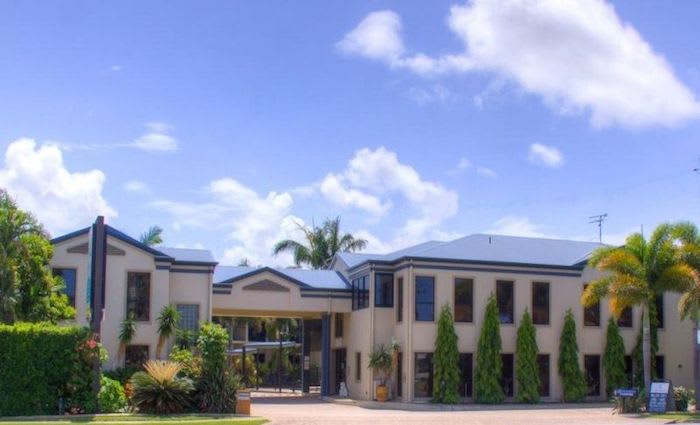Regional Queensland property prices rising: Terry Ryder
EXPERT OBSERVER
There are growing signs of recovery in resources-related markets in Queensland, both in sales activity and prices. This, plus steady performance in the larger regional cities of regional Queensland, has lifted the sector’s overall performance to its strongest position since mid-2017.
Regional Queensland markets collectively have improved in the past 12 months: in the past four quarterly surveys of sales activity conducted by Hotspotting, the number of locations with growing demand has increased from 30 to 36 to 40 to 45. The number of growth markets had decreased sharply late in 2017 but showed steady improvement in 2018.
A standout feature is the recovery in mining-related markets which have spent several years in downturn. This trend is headed by Mackay (pictured above), which now has rising demand coupled with much lower vacancies, and some suburbs are now showing good price growth.
Emerald’s sales activity is rising, as is the iconic coal-mining town of Moranbah and the Surat Basin town of Chinchilla. Rockhampton, a larger regional centre with strong links to the mining sector, is now showing signs of following Mackay’s lead to recovery.
Emerald is a standout: quarterly sales have been 51, 57, 66, 62, 60 and 77, while the median house price has risen 22% to $300,000 in the past 12 months.
Moranbah’s median price has increased 21% - but only to $200,000, still well below the former peak above $700,000 in this classic example of a boom-bust scenario. Clermont is up 20% to $220,000 and Collinsville 17% but remains below $100,000.
I’m not suggesting investors should rush out and look for places to buy in these places: these mining-related towns are highly volatile markets and more people lose money than make their fortunes there.
But the recovery is noteworthy as it’s part of a wider trend of stronger performance in regional Queensland, against a backdrop of the national situation whereby the strongest markets are in regional Australia.
A significant new event in Queensland is the first signs of recovery in Gladstone, which had boom conditions in 2011 and 2012, thanks to three massive gas projects totalling $60 billion, but suffered a property market downturn because developers over-reacted and created a glut.
Two Gladstone suburbs, New Auckland and Clinton, now have rising markets (but six suburbs remain “danger” markets). New Auckland’s median has risen 9% in 12 months, but most Gladstone suburbs have continued to decline. So, the picture is still more negative than positive – but we are seeing evidence of recovery, including in the reduction in the overall vacancy rate (now close to 3%, according to SQM Research).
The larger, more diversified regional centres of Queensland have increasingly steady markets. The Gold Coast and the Sunshine Coast are both producing good results, especially the Sunshine Coast which is undoubtedly the strongest of the Queensland markets, including Brisbane.
Our latest survey has revealed 62 Regional Queensland locations with annual price growth above 7% - and almost half of them are in the Sunshine Coast region. Noosa
Shire region is thriving, after a lengthy period of stagnation. Median price growth in the past year includes Noosa Heads houses 19%, Noosa Heads units 26%, Noosaville units 16%, Sunshine Beach houses 38% and Sunrise Beach units 23%.
Elsewhere on the Sunshine Coast, Doonan’s median house price has risen 27%, Mt Coolum is up 22% and Twin Waters has risen 23%. But, in terms of sales activity, the Sunshine Coast and Noosa markets may have passed their peaks – they now have considerably more plateau markets than rising ones.
The nearby Gympie region – which benefits from proximity to the booming Sunshine Coast economy - has three suburbs with rising demand.
The post-Games boost predicted by some has not eventuated on the Gold Coast. This market was strong from 2015 to 2017 because of the pre-Commonwealth Games construction boom. Since then the growth has subsided and we can find only five growth suburbs in Gold Coast City, but 41 suburbs classified as either “plateau” or “consistency” markets – and three “decline” markets.
Beyond these South-East Queensland areas, the locations showing most signs of rising are the Fraser Coast, Cairns, Toowoomba and the highly-promising Townsville market, where over $25 billion in new investment is targeted.
The Fraser Coast region, centred on Hervey Bay, now has several rising suburbs, with Torquay and Scarness the standouts. Toogoom, Dundowran and Scarness have all recorded strong price uplift.
Cairns has five suburbs with rising demand, while Toowoomba is showing signs of rising on the back of major infrastructure and other property-related investment.
Overall, regional Queensland is showing increasing signs of joining the biggest trend in Australian real estate – the rise and rise of regional markets.
Terry Ryder is the founder of hotspotting.com.au ryder@hotspotting.com.au
twitter.com/hotspotting
